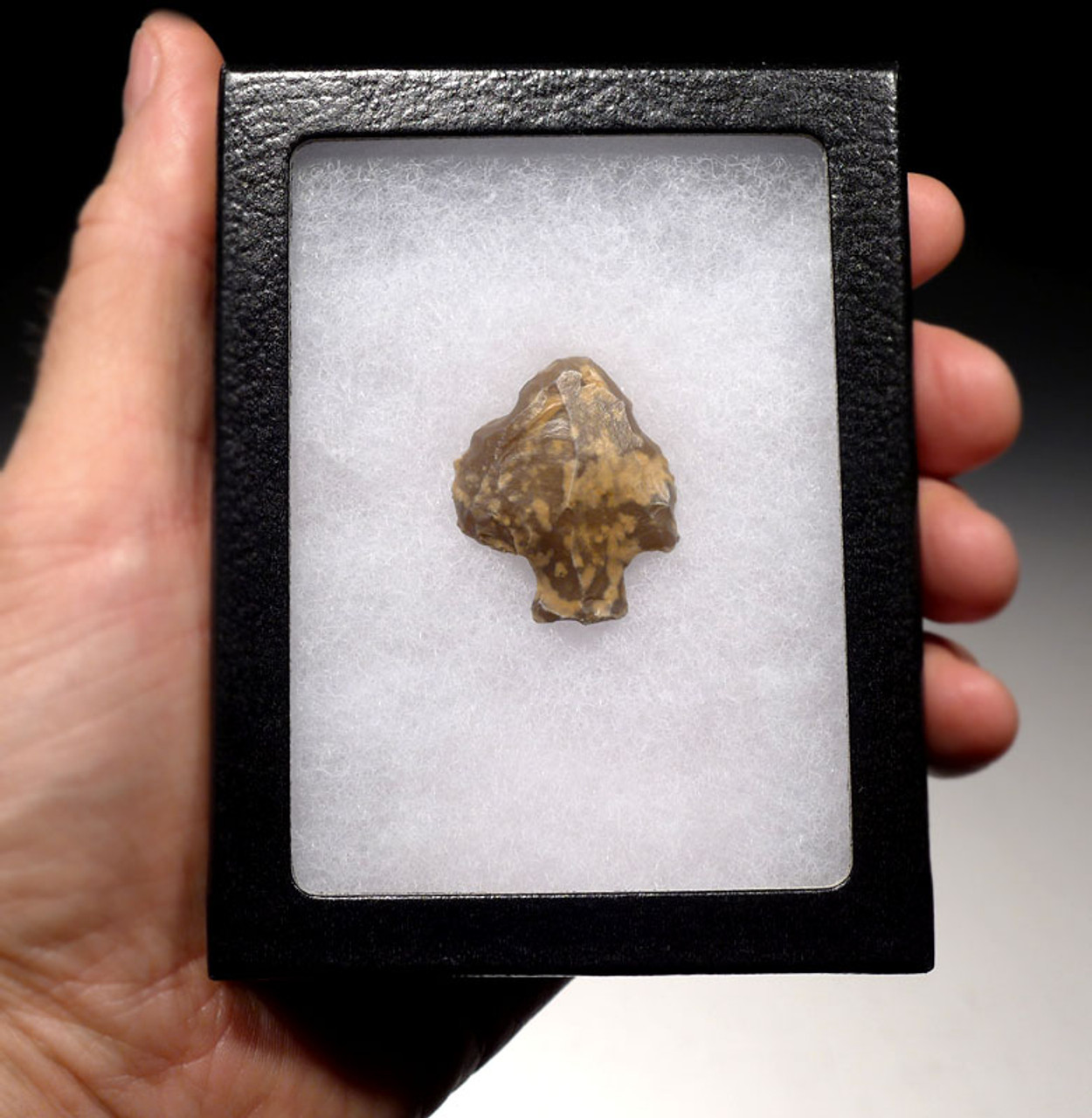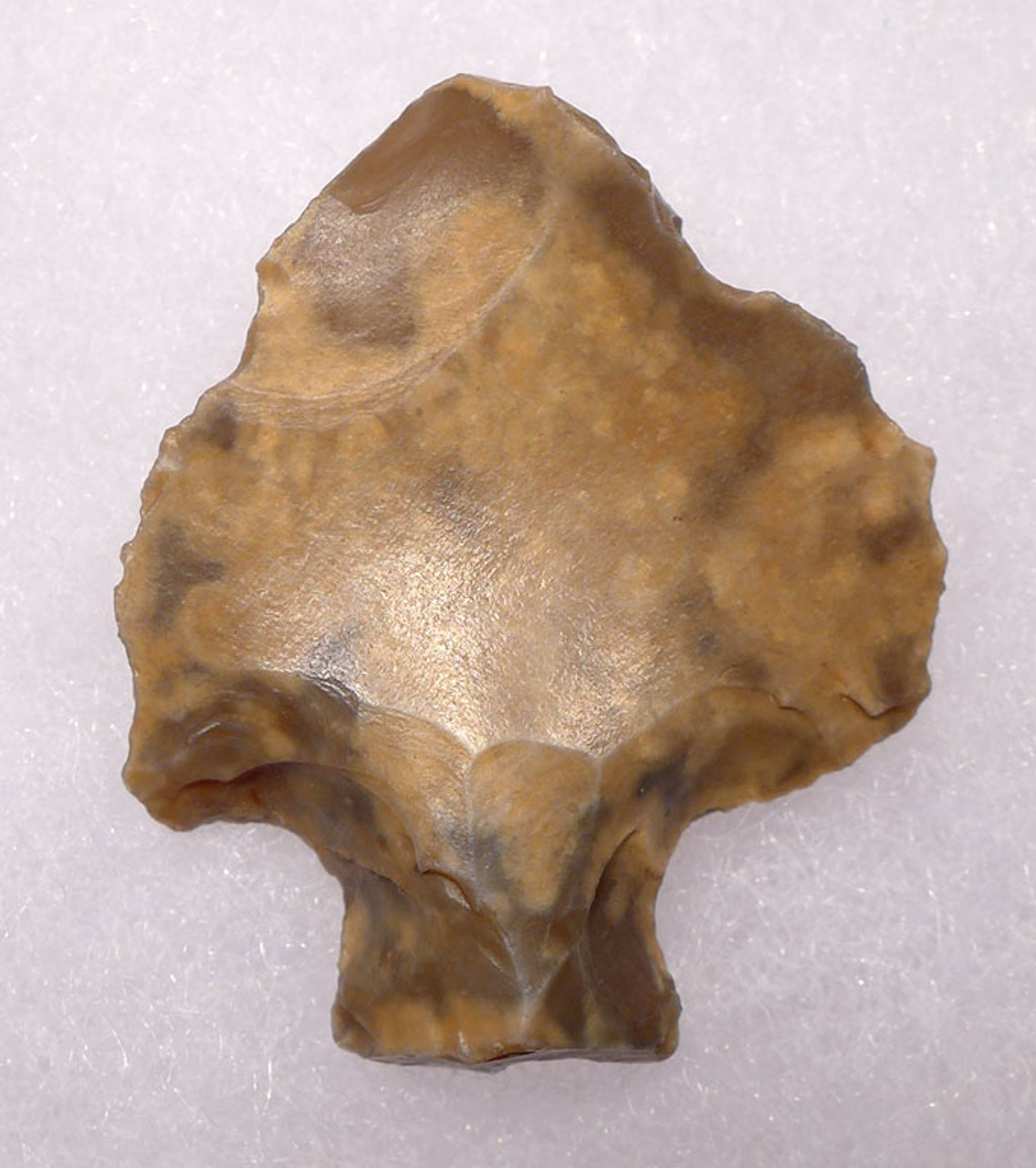Product Description
ID
|
Aterian Tool
|
||
FOUND
|
Exposed Site -
|
||
AGE
|
ATERIAN: 85,000 - 30,000 years
|
||
SIZE
|
1.35" long
|
||
CONDITION
|
INTACT AND COMPLETE.
|
||
NOTE
|
PREHISTORIC PURPOSEFUL
|
||
INCLUDES DISPLAY BOX - Actual Item - One Only
|
|||
CLICK HERE TO LEARN MORE ABOUT ATERIAN TOOLS
Considered the "FIRST" arrowheads in the timeline of human stone tool development, this Aterian tanged point represents an important milestone in human thought and development. Collected on an exposed site in the Northwest Sahara Desert, this is a complete Aterian Tanged Point. It was made by Archaic humans, at a time when Neanderthals were thriving in Europe. Usually, Aterian tanged points display very crude geometry with many barely resembling the arrowhead form that would later follow with refinement. A number of other flake tools with tangs, are found in the Aterian tradition that were scrapers hafted to wood, bone or ivory handles. The Aterian Tool Tradition is the first obvious evidence of a flake tool specifically designed for hafting. The Aterian Tradition also includes non-tanged flake tools but the tanged point is the most notable and a profound development from other Levallois flake tools of the period.
This is an exceptional and authentic example of an Aterian Tanged Point. It is made of an unusual speckled flint and possesses considerably better symmetry and workmanship than typically seen. Prehistoric flake tools like this one, of unique and purposeful aesthetic demonstrate that primitive humans valued art as much as we do today! The majority of Aterian points discovered are incomplete, broken and/or of much worse condition than this fine specimen. It features a deep patina called 'desert varnish' which is a smooth, semi-glossy surface layer consisting of iron oxide and manganese deposited over thousands of years by exposure to blowing desert sand. AS FOUND. NO REPAIR AND NO RESTORATION.
The Aterian is a Middle Stone Age (or Middle Paleolithic) stone tool industry centered in the Tamazgha, but also possibly found in Oman and the Thar Desert. The earliest Aterian dates to c. 145,000 years ago, at the site of Ifri n'Ammar in Morocco however, most of the early dates cluster around the beginning of the Last Interglacial, around 130,000 years ago, when the environment of North Africa began to ameliorate. The Aterian disappeared around 30,000 years ago and it is currently not thought to have influenced subsequent archaeological cultures in the region.
The Aterian is primarily distinguished through the presence of tanged tools and is named after the type site of Bir el Ater, south of Annaba. Bifacially-worked, leaf-shaped tools are also a common artifact type in Aterian assemblages, and so are scrapers as well as Levallois flakes and cores. Items of personal adornment (pierced and ochred Nassarius shell beads) are known from at least one Aterian site, with an age of 82,000 years. The Aterian is one of the oldest examples of regional technological diversification, evidencing significant differentiation to older stone tool industries in the area, frequently described as Mousterian.
 US DOLLAR
US DOLLAR
 EURO
EURO
 AUSTRALIAN DOLLAR
AUSTRALIAN DOLLAR
 CANADIAN DOLLAR
CANADIAN DOLLAR
 POUND STERLING
POUND STERLING








